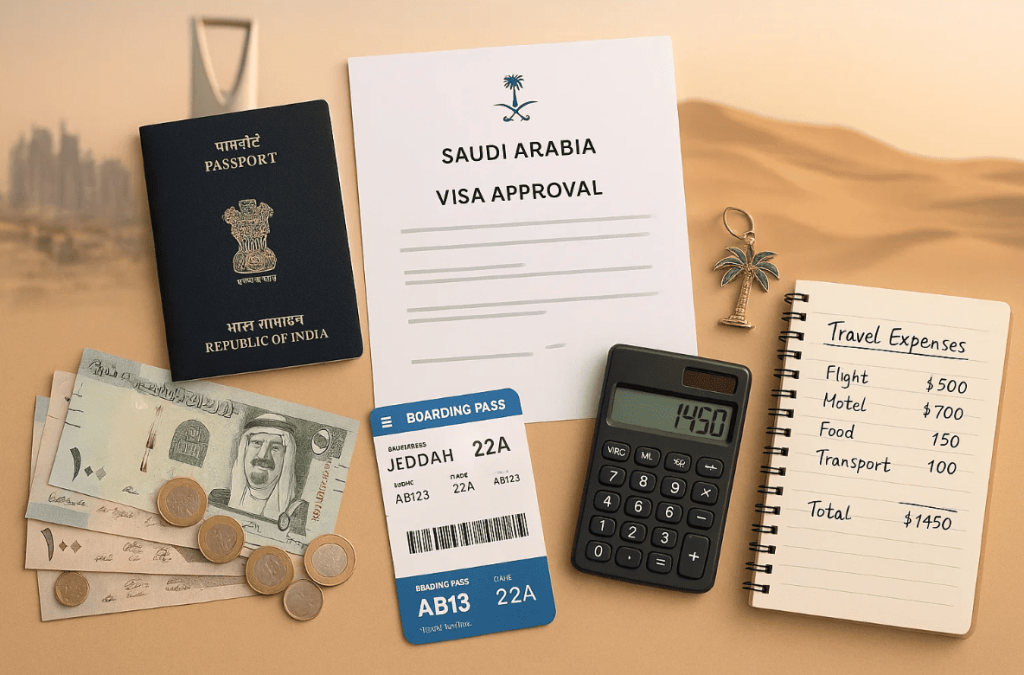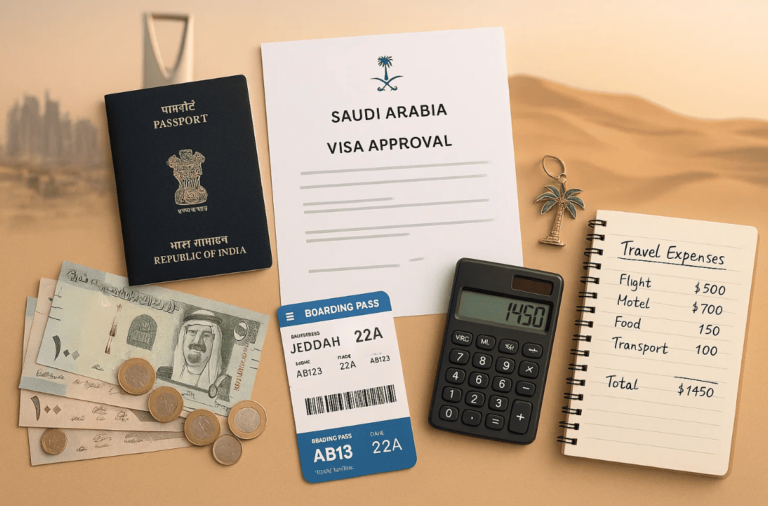Traveling is not just about exploring new destinations, it’s also about managing your finances efficiently. For Indian travelers planning a trip to Saudi Arabia, the allure of modern cities, vast deserts, and sacred sites often raises the important question: how much will it cost?
Whether you are traveling for leisure, pilgrimage, or business, ensuring a successful journey involves smart budgeting. This includes understanding the process of applying for a Saudi Arabia visa and planning for expenses related to food, transportation, accommodation, and activities during your stay.
Let’s delve into the financial aspects of traveling to Saudi Arabia, so that you not only come back with memories but also with your finances in good shape.
Step One: The Visa—Your First Investment

Obtaining the Saudi Arabia visa is the first step and an essential expense to consider. Indian travelers can apply for various types of visas based on their purpose of visit—tourism, business, pilgrimage, or work.
Tourist Visa
- Allows multiple entries
- Valid for up to 1 year
- Stay of 90 days per visit
- Applied online or through visa centers
Business Visa
- Requires an invitation letter from a Saudi company
- Validity and fees vary
Hajj & Umrah Visa
- Seasonal visa, exclusively for religious travel
- Issued through authorized channels
Transit Visa
- Short stay of 3–5 days for connecting flights
💡 Budget tip: It is advisable to apply for your visa at least 3–4 weeks before your departure date. Rushed applications may incur additional costs or lead to rejection, causing last-minute financial strain.
Seeking assistance from professionals like OneVasco ensures that your documentation is accurate from the outset, saving you from the hidden expenses of delays and resubmissions.
Step Two: Flights—Your Biggest Ticket Item
Airfare is likely to be your most significant expense. Flights from India to Saudi Arabia typically cost between ₹25,000 to ₹45,000 for a round trip, depending on the season, destination city (Riyadh, Jeddah, or Dammam), and booking timing.
- Book in advance: Prices tend to increase by 30–40% as the departure date approaches.
- Opt for strategic hubs: Flying to Jeddah may sometimes be more cost-effective than Riyadh.
- Consider layovers: Flights with short stopovers in Gulf cities like Dubai, Doha, or Abu Dhabi can result in savings.
Step Three: Accommodation—Luxury or Budget?
Saudi Arabia offers a range of accommodation options, from luxurious hotels to budget-friendly apartments. Anticipate the following:
- Budget accommodations: ₹3,000–₹5,000 per night
- Mid-range hotels: ₹6,000–₹10,000 per night
- Luxury hotels: ₹12,000+ per night
For a week-long trip, budget-conscious travelers can allocate around ₹25,000–₹30,000 for accommodation, while those opting for mid-range options may spend closer to ₹50,000–₹60,000.
💡 Money-saving tip: In cities like Riyadh and Jeddah, serviced apartments often offer better value than hotels, especially if you are traveling with family or friends.
Step Four: Food—From Biryani to Kabsa
While Indian cuisine is widely available, do not miss the opportunity to savor traditional Saudi dishes like Kabsa (spiced rice with meat), shawarma, and fresh dates.
- Affordable meals: ₹400–₹600 per person
- Dining at restaurants: ₹1,200–₹2,500 per person
- High-end dining: ₹3,500+ per person
A reasonable weekly food budget for an Indian traveler would be approximately ₹15,000–₹20,000, depending on individual eating habits.
Step Five: Getting Around—Transport Costs
Public transportation options are limited outside major cities, leading most travelers to rely on taxis, ride-sharing apps (Uber, Careem), or car rentals.
- Taxi/Uber rides: ₹400–₹800 for short city trips
- Car rental: ₹2,500–₹3,500 per day
- Domestic flights: Approximately ₹5,000–₹7,000 for travel between Riyadh, Jeddah, or AlUla
💡 Budget tip: When traveling in groups, opting for a rental car often proves more cost-effective than taking multiple Uber rides.
Step Six: Sightseeing & Experiences
This is where your journey becomes truly memorable, with costs varying based on the activities you choose to engage in.
- AlUla (UNESCO site): Entry + tours may cost between ₹6,000–₹10,000
- Red Sea diving: Around ₹5,000–₹7,000 per dive
- Desert safari with camping: ₹4,000–₹8,000 per person
- Museums & cultural sites: ₹500–₹1,500 each
💡 Pro tip: Prioritize your interests—whether it’s culture, adventure, or relaxation. Planning ahead helps prevent overspending on every enticing tour.
Step Seven: Daily Budget Estimate
So, how much should an Indian traveler budget for?
Budget Traveler
- Flights: ₹28,000
- Visa + fees: ~₹10,000
- Accommodation (7 nights): ₹25,000
- Food: ₹15,000
- Local transport: ₹8,000
- Sightseeing: ₹15,000
Total: ~₹1,01,000
Mid-Range Traveler
- Flights: ₹35,000
- Visa + fees: ~₹10,000
- Accommodation (7 nights): ₹50,000
- Food: ₹25,000
- Transport: ₹15,000
- Sightseeing: ₹25,000
Total: ~₹1,60,000
Luxury Traveler
- Flights: ₹45,000+
- Visa + fees: ~₹10,000
- Accommodation (7 nights): ₹80,000+
- Food: ₹40,000+
- Transport: ₹25,000+
- Sightseeing & extras: ₹40,000+
Total: ₹2,40,000+
Travel Finance Tips for Indians
- Utilize a Forex Card – Offers better exchange rates than cash and is a safer option for spending abroad.
- Set a Daily Budget – Divide your total budget by the number of days to avoid overspending.
- See also AI in the Office: Enhancing Efficiency and Productivity

